1 of 27

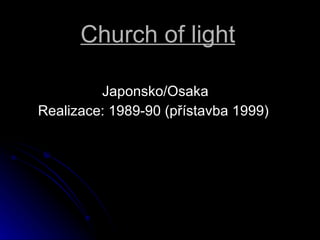

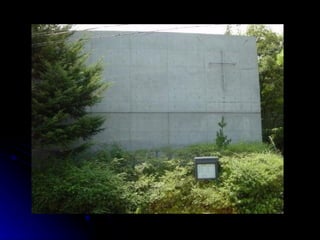
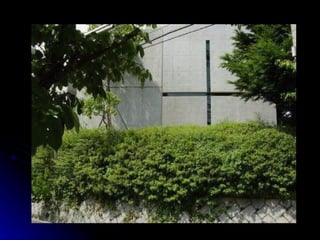
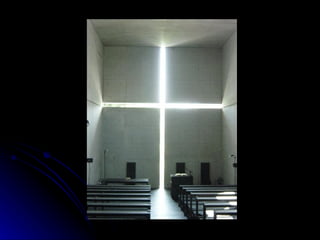
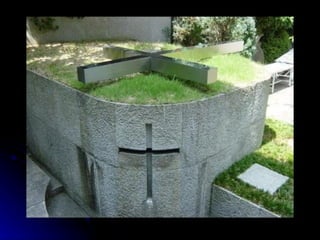
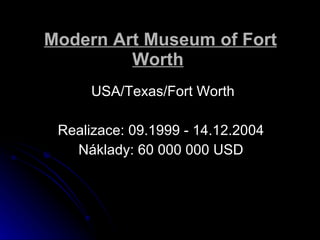
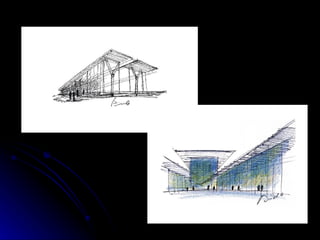


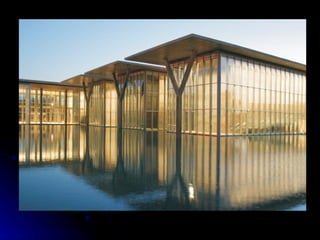

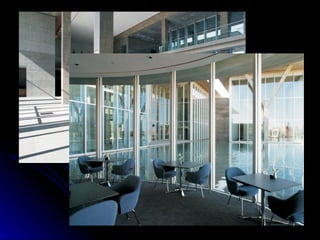
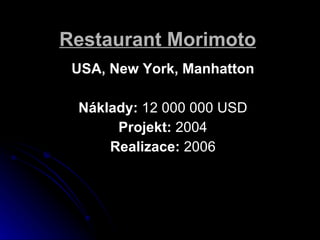
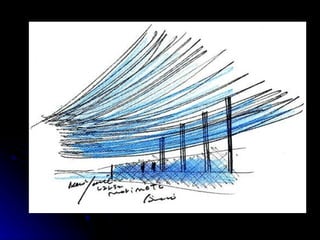
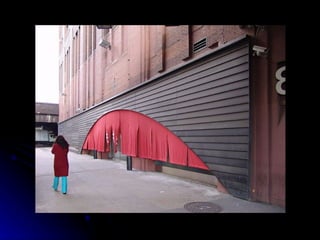
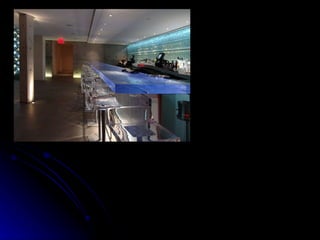
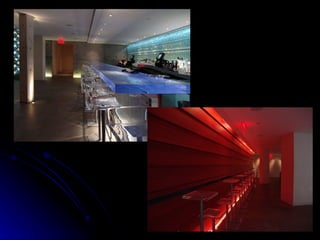
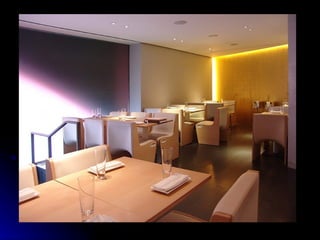
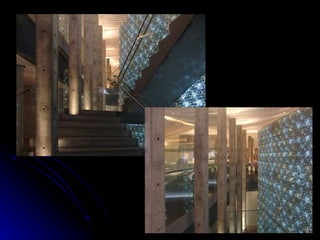
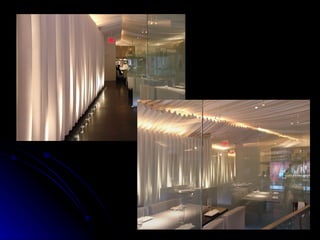
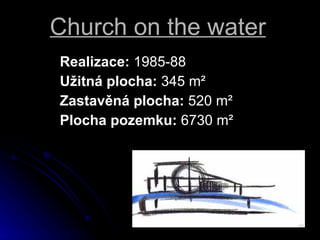
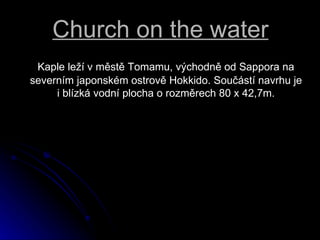

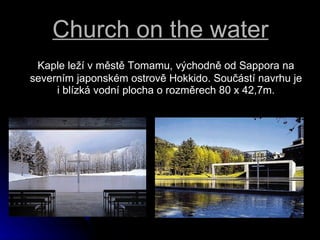
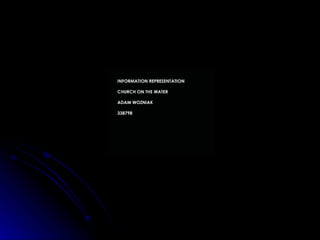
Ad
Recommended
Tadao Ando
Tadao AndoRutuja Bhosale
?
Tadao Ando is a Japanese architect known for his minimalist concrete designs that emphasize empty space and simplicity. Ando was strongly influenced by Japanese culture and religion in his approach. He believes architecture can reform society by changing how people live and the identity of places. Ando is known for designs that create a "haiku" effect through contrasting solid concrete walls with openings that admit natural light and connect the interior to nature. This draws attention to the dualities of light and dark, and solid and void.Tadao ando
Tadao andoOsvajoca
?
Tadao Ando is a renowned Japanese architect born in 1941 in Osaka. He is self-taught and was inspired by visiting temples, shrines, and tea houses in Kyoto and Nara. Ando believes that architecture should condense and purify light to reveal the essential spatial qualities. He uses strong concrete materials but aims to create soft textures and connect buildings to their natural environments. Ando's works leave a distinct stamp through his use of concrete, abstract yet integrated treatment of nature, and the philosophical perspectives behind each design.TADAO ANDO - ARCHITECT OF LIGHT
TADAO ANDO - ARCHITECT OF LIGHTNidhi Thigale
?
Tadao Ando is a self-taught Japanese architect born in 1941 known for his use of light, concrete, and simple geometric forms. Some of his notable works include the Church of Light built in a tight urban space with minimal windows, the Amuza Housing which depicts traditional Japanese living with an interior courtyard, and the underground Chichu Art Museum on Naoshima island with a series of skylights bringing natural light to the galleries. Ando aims to create architectural order through geometry while connecting buildings to their natural surroundings. He has received the Pritzker Architecture Prize and other honors for his contributions to architecture.Tadao andobrayan perez
?
Tadao Ando es un arquitecto japon©”s galardonado que se especializa en el uso de hormig©«n liso y la creaci©«n de espacios interiores cerrados. Algunas de sus obras m©ós destacadas incluyen la Iglesia sobre el Agua, la Iglesia de la Luz y el complejo de viviendas Rokko Housing. Ando se ha visto influenciado por la arquitectura tradicional japonesa as©¬ como por arquitectos modernos como Le Corbusier.Tadao ando
Tadao andoAhmad Riaz
?
Tadao Ando is a renowned Japanese architect born in 1941. He is self-taught and traveled extensively in the 1960s. In 1969 he founded his own firm, Tadao Ando Architect & Associates, in Osaka. He has received many prestigious awards for his work including the Pritzker Architecture Prize in 1995. One of his projects is the Church on the Water built between 1985-1988 in Hokkaido, Japan. The chapel overlooks a man-made pond and is enclosed by glass walls, connecting worshippers to the surrounding nature. Ando's minimalist style uses concrete, stone, and glass to define pure spaces.Tadao Ando- Koshino house
Tadao Ando- Koshino house Nabeel Joomun
?
Tadao Ando is a renowned Japanese architect born in 1941 in Osaka. He was interested in architecture from a young age after seeing drawings by Le Corbusier. The document discusses Ando's Koshino House built between 1980-1984. It consists of two parallel concrete boxes connected underground with a fan-shaped addition. Principles like brutalism, asymmetrical balance, and blending the building into the landscape are used. The house aims to achieve harmony and balance through its design elements.Tadao ando-powerpoint-presentation
Tadao ando-powerpoint-presentationAhmad Riaz
?
Tadao Ando is a Japanese architect known for his minimalist concrete designs that emphasize empty space and simplicity. Ando was strongly influenced by Japanese culture and religion in his emphasis on nothingness and haiku-like designs. He is a self-taught architect who believes architecture can reform society by changing how people live and the identity of places. Ando creates spaces that respond to human spirituality through the juxtaposition of solid concrete walls and natural light.Tadao ando nariwa museum
Tadao ando nariwa museumAfrida Aditi
?
Tadao Ando is a self-taught Japanese architect born in 1941 who is known for his use of light, concrete materials, and geometric forms that blur boundaries between interior and exterior spaces. His Nariwa Museum of Art from 1992-1994 is located in a mountain landscape in Okayama, Japan. The museum features a labyrinth-like ramp entry that leads visitors over an artificial pond and through large window openings connecting indoor and outdoor spaces to emphasize the natural surroundings.Tadao AndoFelipe Lazo
?
Tadao Ando naci©« en 1941 en Osaka, Jap©«n. Es un arquitecto autodidacta que se form©« viajando por Estados Unidos, Europa y ?frica entre 1962 y 1969, visitando obras de arquitectos como Mies van der Rohe y Le Corbusier. En 1968 fund©« su estudio Tadao Ando Architects & Associates en Osaka. Sus caracter©¬sticas arquitect©«nicas incluyen el uso del concreto natural y generosos patios interiores que permiten la percepci©«n del clima exterior.koshino house analysis essay
koshino house analysis essayNabeel Joomun
?
The document analyzes the spatial organization of Tadao Ando's Koshino House through several key elements:
1) The house uses different volume types - double, single, and narrow - organized hierarchically with the largest space for the living room.
2) Spaces are organized linearly and in a grid pattern. Large windows make spaces appear larger.
3) Circulation is accessed from above due to the sloping site, with stairs transitioning between spaces.
4) Light and shadows are used to change the mood, with wall slots and roof openings creating patterns of light. Church of light
Church of light Simran Rattan
?
The Church of Light is located in a small town outside Osaka, Japan. Designed by architect Tadao Ando, the small 113 square meter concrete building uses light and space to create a spiritual atmosphere. A diagonal concrete wall cuts through the main worship space, allowing sunlight to filter throughout the day and give the illusion that the roof is floating. The minimalist design emphasizes simplicity and draws from both Christian and Japanese architectural traditions to provide a contemplative space.Tada ando
Tada andoPradeep Verma
?
Tadao Ando is a renowned Japanese architect known for his minimalist concrete designs. He was self-taught and studied both traditional Japanese architecture and modern Western styles. A key work is the Church of Light (1995), built using concrete and defined by interplays of light and darkness. It won Ando the prestigious Pritzker Architecture Prize. Other works highlighted include the Naoshima Contemporary Art Museum, built into a seaside landscape using concrete and stone, and the Koshino House, featuring parallel concrete volumes connected underground.Microsoft power point tadao ando - waro kishiGabriel Buda
?
Este documento presenta informaci©«n sobre varios aspectos de la cultura japonesa como su ubicaci©«n geogr©ófica, la cultura samurai, saludos tradicionales, geishas, sandalias, comida, dragones, jardines, pagodas, tatami, medidas, tokonoma y dos arquitectos japoneses importantes, Tadao Ando y Waro Kishi, resaltando algunas de sus obras arquitect©«nicas m©ós representativas.Azuma house by tadao ando[1]
Azuma house by tadao ando[1]Herbert Wong
?
The Azuma House was one of Tadao Ando's earliest works. It is a concrete box split into daily living spaces around a central open-air courtyard. The courtyard acts as a hub, separating the living room from the kitchen/dining area and bathroom. Upstairs, bedrooms are located on either side of the courtyard, accessible by a bridge. The house shows a blind facade to the street with only a door indicating use of the space within.Awaji yumebutai complex
Awaji yumebutai complexbansaldhruv
?
The Awaji Yumebutai Complex in Hyogo Prefecture, Japan was designed by renowned architect Tadao Ando. It consists of 109,000 square meters of buildings and gardens spread across 28 hectares. Ando's design incorporates his signature style of using rough cast concrete and narrow openings to create interpenetrating interior and exterior spaces. The complex includes facilities like a conference center, garden, and museum. Ando drew inspiration from Zen simplicity and traditional Japanese gardens to combine circular and irregular structures that complement the natural terrain left by earthquakes.Tadao ando @ 19 5
Tadao ando @ 19 5Abdullah Hossain
?
Tadao Ando is a renowned Japanese architect born in 1941 in Osaka, Japan. He is self-taught and known for his minimalist concrete designs that emphasize pure forms and the use of light. Some of his most famous works include the Church of the Light (1989) which uses light to define the space, and the Modern Art Museum of Fort Worth (2002) with its interplay of glass, water, and display spaces. Ando draws influence from Japanese culture and architects like Le Corbusier and Louis Kahn, and is considered a patron of minimalism through his emphasis on empty space within bold rectangular structures.ESSAY CULTURE & HISTORY II
ESSAY CULTURE & HISTORY IICrysmond Goh
?
1. Le Corbusier was a pioneering modern architect who developed five key principles of architecture including pilotis, a free facade, an open floor plan, ribbon windows, and a roof garden. One of his early works that exemplified these principles was the Villa Stein de Monzie built in 1927-1928.
2. Tadao Ando was a self-taught Japanese architect inspired by Le Corbusier's work. One of his early houses, the Koshino House built in 1980-1984, drew from Le Corbusier's use of concrete and emphasis on the relationship between architecture and nature.
3. The Villa Stein de Monzie and Koshino House both utilize simple geometric forms likeTADAO ANDO Y LA IGLESIA SOBRE EL AGUALudwig Trinidad Santos
?
Este documento presenta una biograf©¬a del arquitecto japon©”s Tadao Ando y describe algunas de sus obras arquitect©«nicas m©ós importantes. Comienza explicando los or©¬genes y la educaci©«n autodidacta de Ando. Luego describe algunos de sus primeros proyectos como la Casa Azuma de 1976 y su consolidaci©«n internacional en las d©”cadas de 1980 y 1990 con obras como la Iglesia de la Luz e Iglesia sobre el Agua. Finalmente, menciona algunos de sus proyectos m©ós recientes del siglo XXI como el CentroąĪ║S█Ī Koshino House by Tadao Ando
ąĪ║S█Ī Koshino House by Tadao AndoLee Wan Xuan
?
The Koshino House in Ashiya, Japan was designed by renowned architect Tadao Ando in 1980-1984. The house consists of two parallel cubic volumes connected by an underground tunnel. Concrete was the primary material used to create the smooth, corrugated surfaces of walls, floors and ceilings. Large windows made of glass allow natural light to flood the interior spaces. The design incorporates principles of Brutalism, asymmetry, repetition and blending interior and exterior spaces.Tadao AndoSkrltsl
?
Tadao Ando es un arquitecto japon©”s autodidacta que bas©« su enfoque en la relaci©«n entre la arquitectura y el entorno, utilizando materiales limpios y formas geom©”tricas. Su filosof©¬a se centra en la creaci©«n de espacios que promueven la meditaci©«n, la seriedad espiritual y la introspecci©«n a trav©”s del uso de luz y vac©¬o. A lo largo de su carrera, ha sido reconocido con m©▓ltiples premios y ha dise?ado obras significativas como la Iglesia de la Luz, que refleja su visi©«n ©▓nica de la arquitectura.Church of light- A Case study
Church of light- A Case studyDhanya Pravin
?
The Church of Light is located outside Osaka, Japan. It was designed between 1987 and 1988 and is an example of outstanding architecture integrated into the urban fabric. The church uses light and a simple design to create a place of retreat and emphasize nature, beckoning simplicity. It features a main chapel with seating facing a focal point of penetrating light, as well as a Sunday school and minister's home.Tadao Ando
Tadao AndoJayD480
?
Tadao Ando is a self-taught Japanese architect born in 1941 in Osaka. He was inspired by Frank Lloyd Wright's Imperial Hotel and decided to pursue architecture after leaving his boxing career. Ando attended night classes to learn drawing and took correspondence courses in interior design. He established his own firm, Tadao Ando Architects and Associates, in 1968 after visiting buildings by Le Corbusier, Frank Lloyd Wright, and Louis Kahn. Ando's architectural style emphasizes nothingness and empty space to represent simplicity and he favors complex spatial circulation with an appearance of simplicity while maintaining influences from Japanese culture and language.Richard Meier - Architect Case Study
Richard Meier - Architect Case StudyNicholas Socrates
?
Richard Meier is an American architect born in 1934 known for his modernist and minimalist buildings constructed primarily of white surfaces. Some of his most famous works include the Getty Center in Los Angeles, the High Museum of Art in Atlanta, and the Hague City Hall and Central Library in the Netherlands. Meier's first project was the Smith House in 1965 and he was awarded the prestigious Pritzker Architecture Prize in 1984. His architecture is characterized by an emphasis on light, space, and the use of whiteness in his designs.Zaha hadid
Zaha hadidDeepak Raj
?
The document presents information about architect Zaha Hadid in 11 slides. It provides an introduction to her background and education, her architectural philosophy focused on deconstructivism and fluidity, and lists some of her seminal works. Key projects discussed include the Vitra Fire Station, Guangzhou Opera House, and London Aquatics Centre. The presentation aims to educate about Hadid's groundbreaking style and her influence on architecture through dynamic, non-rectilinear designs.Tadao ando2majoyef
?
Tadao Ando es un arquitecto japon©”s nacido en 1941 en Osaka. Algunas de sus obras representativas incluyen la Casa Azuma en Osaka, la Fundaci©«n Pulitzer en St. Louis, y el Museo de Arte Moderno en Fort Worth. En sus dise?os, Ando rechaza el materialismo consumista y en su lugar usa materiales contempor©óneos de una manera sencilla que enfatiza la luz y formas para crear sensaciones positivas.Tadao AndoCarlos Zavarce
?
La casa Koshino de Tadao Ando explora el uso de la luz, los materiales y la geometr©¬a para crear un laberinto espacial. La arquitectura seg©▓n Ando es la interacci©«n entre la luz, la forma y el espacio.More Related Content
Viewers also liked (20)
Tadao AndoFelipe Lazo
?
Tadao Ando naci©« en 1941 en Osaka, Jap©«n. Es un arquitecto autodidacta que se form©« viajando por Estados Unidos, Europa y ?frica entre 1962 y 1969, visitando obras de arquitectos como Mies van der Rohe y Le Corbusier. En 1968 fund©« su estudio Tadao Ando Architects & Associates en Osaka. Sus caracter©¬sticas arquitect©«nicas incluyen el uso del concreto natural y generosos patios interiores que permiten la percepci©«n del clima exterior.koshino house analysis essay
koshino house analysis essayNabeel Joomun
?
The document analyzes the spatial organization of Tadao Ando's Koshino House through several key elements:
1) The house uses different volume types - double, single, and narrow - organized hierarchically with the largest space for the living room.
2) Spaces are organized linearly and in a grid pattern. Large windows make spaces appear larger.
3) Circulation is accessed from above due to the sloping site, with stairs transitioning between spaces.
4) Light and shadows are used to change the mood, with wall slots and roof openings creating patterns of light. Church of light
Church of light Simran Rattan
?
The Church of Light is located in a small town outside Osaka, Japan. Designed by architect Tadao Ando, the small 113 square meter concrete building uses light and space to create a spiritual atmosphere. A diagonal concrete wall cuts through the main worship space, allowing sunlight to filter throughout the day and give the illusion that the roof is floating. The minimalist design emphasizes simplicity and draws from both Christian and Japanese architectural traditions to provide a contemplative space.Tada ando
Tada andoPradeep Verma
?
Tadao Ando is a renowned Japanese architect known for his minimalist concrete designs. He was self-taught and studied both traditional Japanese architecture and modern Western styles. A key work is the Church of Light (1995), built using concrete and defined by interplays of light and darkness. It won Ando the prestigious Pritzker Architecture Prize. Other works highlighted include the Naoshima Contemporary Art Museum, built into a seaside landscape using concrete and stone, and the Koshino House, featuring parallel concrete volumes connected underground.Microsoft power point tadao ando - waro kishiGabriel Buda
?
Este documento presenta informaci©«n sobre varios aspectos de la cultura japonesa como su ubicaci©«n geogr©ófica, la cultura samurai, saludos tradicionales, geishas, sandalias, comida, dragones, jardines, pagodas, tatami, medidas, tokonoma y dos arquitectos japoneses importantes, Tadao Ando y Waro Kishi, resaltando algunas de sus obras arquitect©«nicas m©ós representativas.Azuma house by tadao ando[1]
Azuma house by tadao ando[1]Herbert Wong
?
The Azuma House was one of Tadao Ando's earliest works. It is a concrete box split into daily living spaces around a central open-air courtyard. The courtyard acts as a hub, separating the living room from the kitchen/dining area and bathroom. Upstairs, bedrooms are located on either side of the courtyard, accessible by a bridge. The house shows a blind facade to the street with only a door indicating use of the space within.Awaji yumebutai complex
Awaji yumebutai complexbansaldhruv
?
The Awaji Yumebutai Complex in Hyogo Prefecture, Japan was designed by renowned architect Tadao Ando. It consists of 109,000 square meters of buildings and gardens spread across 28 hectares. Ando's design incorporates his signature style of using rough cast concrete and narrow openings to create interpenetrating interior and exterior spaces. The complex includes facilities like a conference center, garden, and museum. Ando drew inspiration from Zen simplicity and traditional Japanese gardens to combine circular and irregular structures that complement the natural terrain left by earthquakes.Tadao ando @ 19 5
Tadao ando @ 19 5Abdullah Hossain
?
Tadao Ando is a renowned Japanese architect born in 1941 in Osaka, Japan. He is self-taught and known for his minimalist concrete designs that emphasize pure forms and the use of light. Some of his most famous works include the Church of the Light (1989) which uses light to define the space, and the Modern Art Museum of Fort Worth (2002) with its interplay of glass, water, and display spaces. Ando draws influence from Japanese culture and architects like Le Corbusier and Louis Kahn, and is considered a patron of minimalism through his emphasis on empty space within bold rectangular structures.ESSAY CULTURE & HISTORY II
ESSAY CULTURE & HISTORY IICrysmond Goh
?
1. Le Corbusier was a pioneering modern architect who developed five key principles of architecture including pilotis, a free facade, an open floor plan, ribbon windows, and a roof garden. One of his early works that exemplified these principles was the Villa Stein de Monzie built in 1927-1928.
2. Tadao Ando was a self-taught Japanese architect inspired by Le Corbusier's work. One of his early houses, the Koshino House built in 1980-1984, drew from Le Corbusier's use of concrete and emphasis on the relationship between architecture and nature.
3. The Villa Stein de Monzie and Koshino House both utilize simple geometric forms likeTADAO ANDO Y LA IGLESIA SOBRE EL AGUALudwig Trinidad Santos
?
Este documento presenta una biograf©¬a del arquitecto japon©”s Tadao Ando y describe algunas de sus obras arquitect©«nicas m©ós importantes. Comienza explicando los or©¬genes y la educaci©«n autodidacta de Ando. Luego describe algunos de sus primeros proyectos como la Casa Azuma de 1976 y su consolidaci©«n internacional en las d©”cadas de 1980 y 1990 con obras como la Iglesia de la Luz e Iglesia sobre el Agua. Finalmente, menciona algunos de sus proyectos m©ós recientes del siglo XXI como el CentroąĪ║S█Ī Koshino House by Tadao Ando
ąĪ║S█Ī Koshino House by Tadao AndoLee Wan Xuan
?
The Koshino House in Ashiya, Japan was designed by renowned architect Tadao Ando in 1980-1984. The house consists of two parallel cubic volumes connected by an underground tunnel. Concrete was the primary material used to create the smooth, corrugated surfaces of walls, floors and ceilings. Large windows made of glass allow natural light to flood the interior spaces. The design incorporates principles of Brutalism, asymmetry, repetition and blending interior and exterior spaces.Tadao AndoSkrltsl
?
Tadao Ando es un arquitecto japon©”s autodidacta que bas©« su enfoque en la relaci©«n entre la arquitectura y el entorno, utilizando materiales limpios y formas geom©”tricas. Su filosof©¬a se centra en la creaci©«n de espacios que promueven la meditaci©«n, la seriedad espiritual y la introspecci©«n a trav©”s del uso de luz y vac©¬o. A lo largo de su carrera, ha sido reconocido con m©▓ltiples premios y ha dise?ado obras significativas como la Iglesia de la Luz, que refleja su visi©«n ©▓nica de la arquitectura.Church of light- A Case study
Church of light- A Case studyDhanya Pravin
?
The Church of Light is located outside Osaka, Japan. It was designed between 1987 and 1988 and is an example of outstanding architecture integrated into the urban fabric. The church uses light and a simple design to create a place of retreat and emphasize nature, beckoning simplicity. It features a main chapel with seating facing a focal point of penetrating light, as well as a Sunday school and minister's home.Tadao Ando
Tadao AndoJayD480
?
Tadao Ando is a self-taught Japanese architect born in 1941 in Osaka. He was inspired by Frank Lloyd Wright's Imperial Hotel and decided to pursue architecture after leaving his boxing career. Ando attended night classes to learn drawing and took correspondence courses in interior design. He established his own firm, Tadao Ando Architects and Associates, in 1968 after visiting buildings by Le Corbusier, Frank Lloyd Wright, and Louis Kahn. Ando's architectural style emphasizes nothingness and empty space to represent simplicity and he favors complex spatial circulation with an appearance of simplicity while maintaining influences from Japanese culture and language.Richard Meier - Architect Case Study
Richard Meier - Architect Case StudyNicholas Socrates
?
Richard Meier is an American architect born in 1934 known for his modernist and minimalist buildings constructed primarily of white surfaces. Some of his most famous works include the Getty Center in Los Angeles, the High Museum of Art in Atlanta, and the Hague City Hall and Central Library in the Netherlands. Meier's first project was the Smith House in 1965 and he was awarded the prestigious Pritzker Architecture Prize in 1984. His architecture is characterized by an emphasis on light, space, and the use of whiteness in his designs.Zaha hadid
Zaha hadidDeepak Raj
?
The document presents information about architect Zaha Hadid in 11 slides. It provides an introduction to her background and education, her architectural philosophy focused on deconstructivism and fluidity, and lists some of her seminal works. Key projects discussed include the Vitra Fire Station, Guangzhou Opera House, and London Aquatics Centre. The presentation aims to educate about Hadid's groundbreaking style and her influence on architecture through dynamic, non-rectilinear designs.Tadao ando2majoyef
?
Tadao Ando es un arquitecto japon©”s nacido en 1941 en Osaka. Algunas de sus obras representativas incluyen la Casa Azuma en Osaka, la Fundaci©«n Pulitzer en St. Louis, y el Museo de Arte Moderno en Fort Worth. En sus dise?os, Ando rechaza el materialismo consumista y en su lugar usa materiales contempor©óneos de una manera sencilla que enfatiza la luz y formas para crear sensaciones positivas.Tadao AndoCarlos Zavarce
?
La casa Koshino de Tadao Ando explora el uso de la luz, los materiales y la geometr©¬a para crear un laberinto espacial. La arquitectura seg©▓n Ando es la interacci©«n entre la luz, la forma y el espacio.More from Petr Vanek (11)
Marcio Kogan
Marcio KoganPetr Vanek
?
This document appears to list biographical information and works by Brazilian architect Marcio Kogan between 2002 and 2007. It includes dates and locations for a Microbiology Museum in Sao Paulo from 2002, a house called Du Plessis House in Paraty in 2003, a Br House in Araras in 2004, a Cury House in Sao Paulo in 2005, an Osler House in Brasilia in 2006, and a Nursery School called Primetime Child in Sao Paulo in 2007. It also lists several house and building names without dates that were likely designed by Kogan.Frank O Gehry
Frank O GehryPetr Vanek
?
The document provides a date of birth for Frank Owen Goldberg of 28.2.1929 in Toronto. It also mentions the Walt Disney Concert Hall in Los Angeles twice, suggesting it is related to both Frank Goldberg and the location.Ad
Tadao Ando
- 1. Tadao ANDO * 13.10.1941 - Osaka, Japonsko
- 2. Church of light Japonsko/Osaka Realizace: 1989-90 (p?©¬stavba 1999)
- 3. ?
- 4. ?
- 5. ?
- 6. ?
- 7. ?
- 8. Modern Art Museum of Fort Worth USA/Texas/Fort Worth Realizace: 09.1999 - 14.12.2004 N©óklady: 60 000 000 USD
- 9. ?
- 10. ?
- 11. ?
- 12. ?
- 13. ?
- 14. ?
- 15. Restaurant Morimoto USA, New York, Manhatton N©óklady: 12 000 000 USD Projekt: 2004 Realizace: 2006
- 16. ?
- 17. ?
- 18. ?
- 19. ?
- 20. ?
- 21. ?
- 22. ?
- 23. Church on the water Realizace: 1985-88 U?itn©ó plocha: 345 m? Zastav©¦n©ó plocha: 520 m? Plocha pozemku: 6730 m?
- 24. Church on the water Kaple le?©¬ v?m©¦st©¦ Tomamu, v?chodn©¦ od Sappora na severn©¬m japonsk©”m ostrov©¦ Hokkido. Sou?©óst©¬ navrhu je i?bl©¬zk©ó vodn©¬ plocha o?rozm©¦rech 80 x 42,7m.
- 25. Church on the water Kaple le?©¬ v?m©¦st©¦ Tomamu, v?chodn©¦ od Sappora na severn©¬m japonsk©”m ostrov©¦ Hokkido. Sou?©óst©¬ navrhu je i?bl©¬zk©ó vodn©¬ plocha o?rozm©¦rech 80 x 42,7m.
- 26. Church on the water Kaple le?©¬ v?m©¦st©¦ Tomamu, v?chodn©¦ od Sappora na severn©¬m japonsk©”m ostrov©¦ Hokkido. Sou?©óst©¬ navrhu je i?bl©¬zk©ó vodn©¬ plocha o?rozm©¦rech 80 x 42,7m.
- 27. ?
